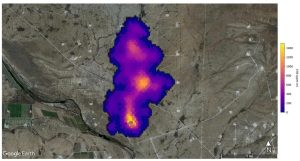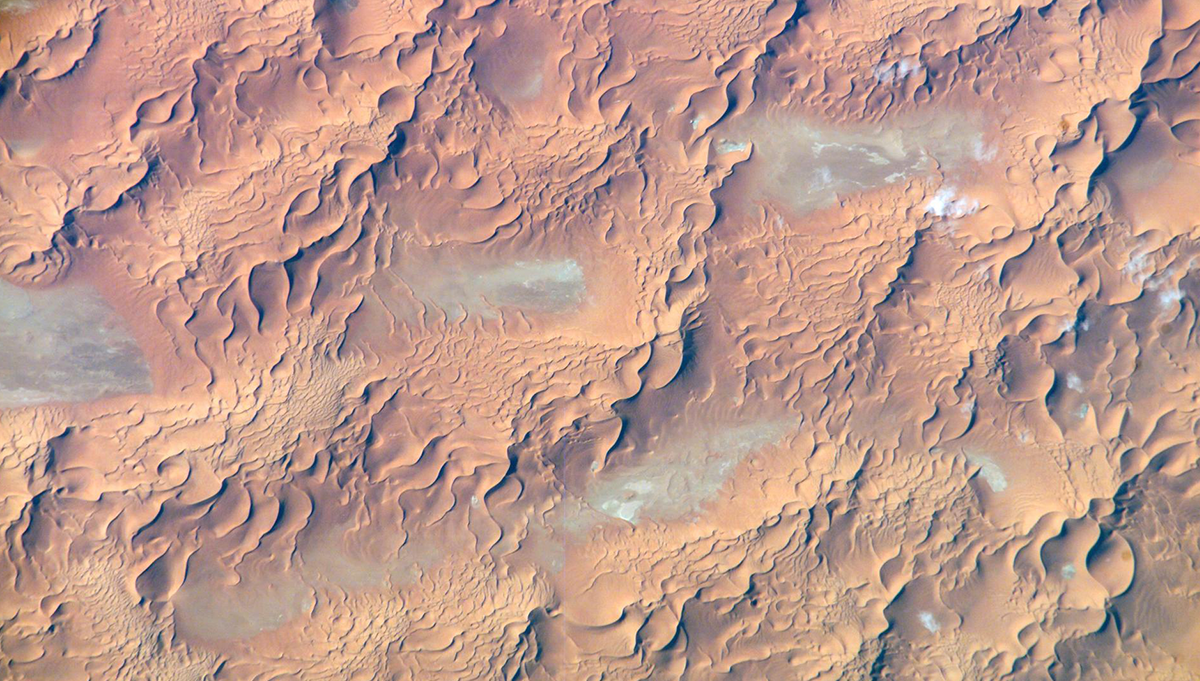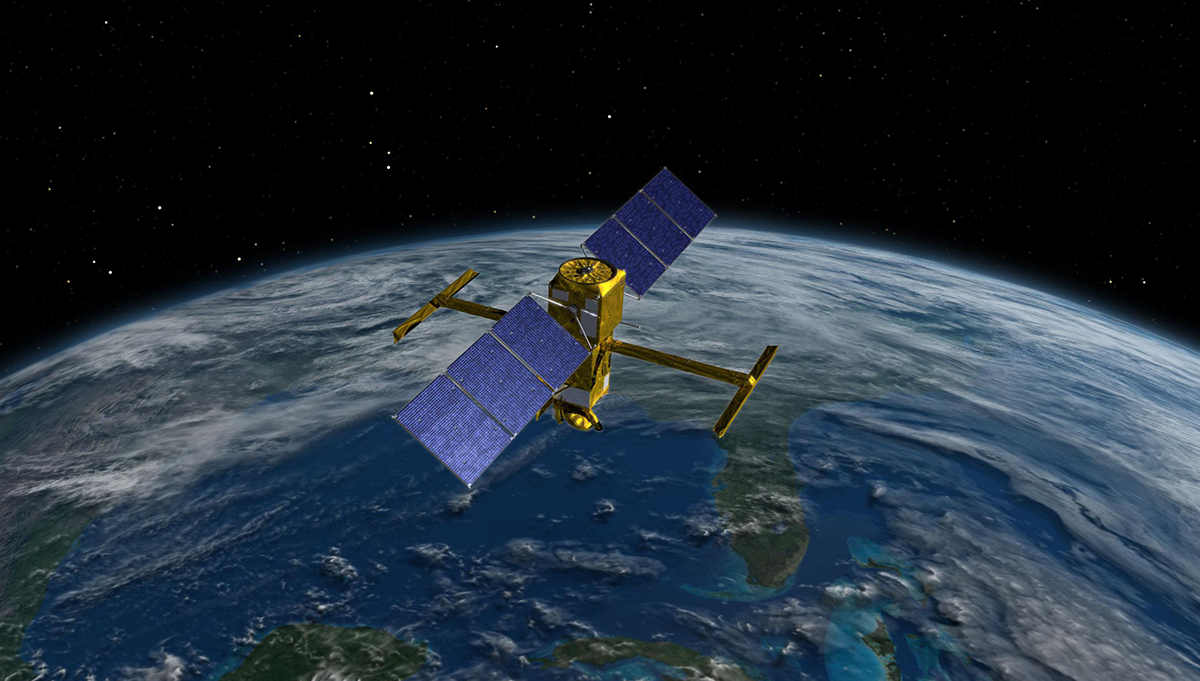
12 plumes of methane combine for a significant emission near Hazar, Turkmenistan, a port city on the Caspian Sea. NASA’s EMIT mission detected the plumes as part of early testing aboard the International Space Station.
Credits: NASA/JPL-Caltech
Mission to examine impact of dust finds massive gas emissions.
Methane represents a tiny fraction of Earth’s atmosphere—just 0.00018 percent. But it has an out-sized effect on climate change. Scientists believe that the odorless, transparent gas is responsible for about one-sixth of current global warming. That’s because although there is 200 times more carbon dioxide in the atmosphere, one ton of methane can trap about 85 times more heat than the equivalent amount of carbon dioxide.
It enters the atmosphere in many ways, from volcanoes and swamps to termites and wildfires. Human activity around agriculture and energy production contributes significant amounts. Levels of methane in the atmosphere today are more than 160 percent above pre-industrial levels. Because methane is short-lived, typically breaking down within about a decade through chemical reactions, cutting methane emissions will have a positive, near-term effect on reducing climate change.
Early data from NASA’s Earth Surface Mineral Dust Source Investigation (EMIT) sheds surprising new light on methane emissions, pinpointing large discharges in surprising places across the globe. EMIT was installed on the International Space Station earlier this year. Its two-mirror telescope and a spectrometer combine to examine light reflected by Earth’s arid regions across a broad spectrum to measure the mineral composition of the dust and determine what cumulative effect that dust could have on heating or cooling the planet.
“… In order to see those minerals, we have to measure a wavelength range that includes their molecular signatures. It turns out that methane also has a spectral signature in the same wavelength range and that’s what has allowed us to be sensitive to methane,” said Robert Green, EMIT Principal Investigator, speaking at a recent NASA press conference.
“…We did anticipate that EMIT would have sensitivity to these gases from space,” said Andrew Thorpe, a Research Technologist at NASA’s Jet Propulsion Laboratory. “And as part of our efforts to check the accuracy of the imaging spectrometer’s mineral data, we did in fact verify that EMIT could detect and map methane and carbon dioxide plumes.”

The 2-mile (3.3-kilometer) long methane plume originating in the Permian Basin.
Credits: NASA/JPL-Caltech
“The real strength of EMIT is that it combines coverage of a large portion of the Earth’s surface with the spectral and spatial resolution that’s required to map methane point sources at the facility scale. And because EMIT is on board the International Space Station, which has an orbit of every 90 minutes, we’ll have multiple observations of methane plumes over time, which is really important to better understand if emissions are persistent,” Thorpe said.
The EMIT team presented several enhanced images of methane emissions at the press conference, using data collected as they were performing an early check of the instrument from the ISS. One image showed a methane plume about 2 miles long that EMIT detected southeast of Carlsbad, New Mexico in the Permian Basin, home to a portion of the Mid-continent oil field. Another image showed a methane plume at least 3 miles long coming from a major landfill south of Tehran.
“Nobody had indicated that the Permian super emitter would be there or the landfill super emitter. … So, while these are in family with other comparable super emitters, nobody knew to look for these, no one knew of that particular landfill,” said Green. “The advantage and the contribution we hope we can make is with the broad area coverage, we can see if there are super emitters in places no one has expected them.”
The team knew to look near the port city of Hazar, Turkmenistan, on the Cheleken Peninsula of the Caspian Sea. The 12 plumes streaming from oil and gas infrastructure there combine to emit a staggering amount of methane.

Engineers and technicians at NASA’s Jet Propulsion Laboratory in Southern California assemble components of the EMIT mission instrument in December 2021.
Credits: NASA/JPL-Caltech
“The Turkmenistan plumes are very large in extent,” Thorpe said. “This example had a plume that was in excess of 20 miles down wind, and the emission rate at 55.6 tons per hour is similar to the Aliso Canyon emission in 2015…”
The Aliso Canyon leak, which spanned 112 days from October 2015 to February 2016 is considered the largest methane leak in U.S. history. In total, about 97,000 tonnes of methane was released. That’s roughly 25 percent of annual methane emissions for the entire Los Angeles Basin. At its peak, the leak was doubling methane emissions for the Los Angeles Basin. It was the first time a single, specific methane leak had been observed from space.
“We’re really excited about EMIT’s potential for reducing methane emissions from human activity by pinpointing these emission sources,” Thorpe said, noting that NASA intends to share EMIT’s methane results with the public by developing a portal on JPL’s website. “The results today showcase only a few examples of a limited analysis of EMIT data. We are really only scratching the surface of EMIT’s potential for mapping greenhouse gases. Going forward, I’m really excited to continue looking at different areas and emission sectors to better improve our understanding of greenhouse gas budgets.”









